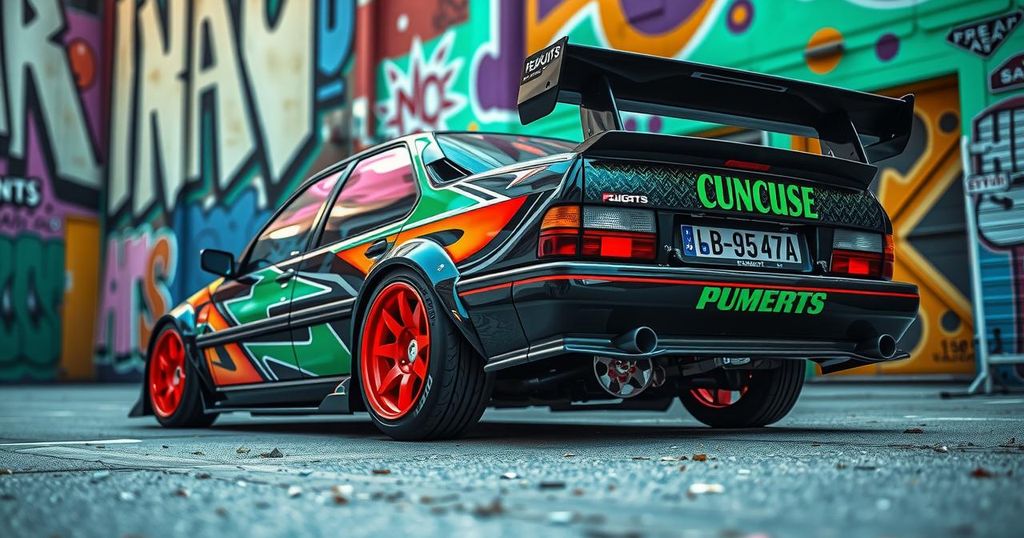The Unique Tuning Culture of Peugeot 405s in Iran: A Look at Local Trends

The Peugeot 405 has a unique tuning subculture in Iran, where enthusiasts modify the car extensively, often raising the rear ends for stylistic and practical purposes. Despite its age, the vehicle remains popular among Iranians, showcasing a diverse range of modifications and cultural significance.
Tuning cars varies greatly from one country to another, and Iran has its own unique flavor to add to the mix. While muscle cars dominate the American scene and Japan is all about turbocharged beasts, Iranians have embraced the Peugeot 405. This particular sedan, once a staple of Iranian roads, can be seen transformed in ways that are uncommon elsewhere.
The Peugeot 405 has a long history — it first rolled off assembly lines in France in 1987, and an Iranian factory opened just five years later, in 1992. Fast-forward to 2023, the iconic model, now basically known as the Peugeot PARS, has been updated but still retains its classic essence. Its production came to a halt last year, though it remains a symbol in the Iranian automotive scene with a legacy spanning over three decades.
Today, one can find a plethora of Peugeot 405s in Iran. Its popularity has birthed an entire culture of tuners and modifiers who cherish this vehicle. I recently spoke with an Iranian enthusiast named Shayan, who shared his passion for the Peugeot 405. He noted that despite its age, the car continues to capture the hearts of young and middle-aged drivers alike. “To be honest, we in Iran really like the Peugeot 405,” Shayan stated.
Among the variants of this classic, the GLX trim holds a special place in the hearts of tuners. Shayan pointed out the GLX version, produced in Iran with highly regarded engines like the XU9 and XU7 L3. The aesthetics, especially a creamy dashboard from models produced between 2010 to 2013, have further added to its charm, making it particularly appealing in the Iranian market.
The XU7 L3 engine, a 1.8-liter inline-four, produces a modest 100 horsepower. This may not sound extraordinary, but tuners have a way of maximizing performance with achievable modifications, such as new intakes and exhaust systems. Shayan excitedly mentioned a remarkable tuning job pushing a 405 to as much as 700 horsepower using nitrous oxide. But most enthusiasts focus on merely improving their power outputs, emphasizing practicality over showy dyno numbers.
Another enthusiast favorite is the Pars ELX, which sports a newer 1.9-liter XUM engine. This engine provides 105 horsepower, allowing for a variety of performance enhancements via aftermarket parts. Many owners eagerly share their adventures and take on speed challenges, with some proudly boasting of achieving top speeds exceeding 161 mph. Shayan commented, “Mother Iran, we have reached a speed of 260 km/h (161 mph) with this car!”
Unsurprisingly, the Iranian Peugeot community shares typical enthusiast behaviors — improvements like engine swaps and exhaust upgrades are common; however, paint jobs are less frequent, resulting in cars that appear standard despite hidden modifications beneath the surface. A unique trend elevates the rear ends of these vehicles skyward instead of lowering them, which stands out from tuning cultures prevalent across the globe.
Shayan explained this phenomenon relates to smuggling practices, where a raised rear aids in speed and loading. “In Iran… they make [cars] sporty with high height,” he elucidated. This trend has evolved into a visual hallmark among tuners, with some opting for adjustable air suspension, which allows them to switch between raised and lowered stances at will.
The creativity within Iran’s Peugeot 405 community is incredibly diverse. From flashy installations to unique modifications like systems for dispensing caltrops, the enthusiasm runs deep. Additionally, Shayan shared that modified Peugeots are locally referred to as “fighter jets.” His own car is a modified 405 GLX that boasts enhanced performance while retaining an unassuming exterior.
What’s fascinating is how this vibrant tuner culture is somewhat hiding in plain sight. Many would not realize the rich heritage of car enthusiasts in Iran due to language barriers and limited visibility on international platforms. Western media often overlook Iran’s automotive scene, yet the passion for tuning and modding is alive and well among the masses.
The Peugeot 405’s storied relationship with Iranian car culture exemplifies how a seemingly ordinary sedan can transcend its origins to become a canvas for creativity and innovation. Despite the barriers, the cultural appreciation for cars unites enthusiasts from different corners of the globe, revealing how universal the love for driving truly is.
In summary, the Peugeot 405 has evolved into a cornerstone of Iran’s automotive culture, with a vibrant tuning scene driven by creativity and local preferences. From aesthetic modifications such as raised rear ends to significant performance enhancements, Iranian enthusiasts embody a unique take on car tuning that reflects their history and context. This passion for cars highlights a shared global connection among automotive enthusiasts, showing that cars can bring people together, regardless of geography or cultural barriers.
Original Source: www.theautopian.com





